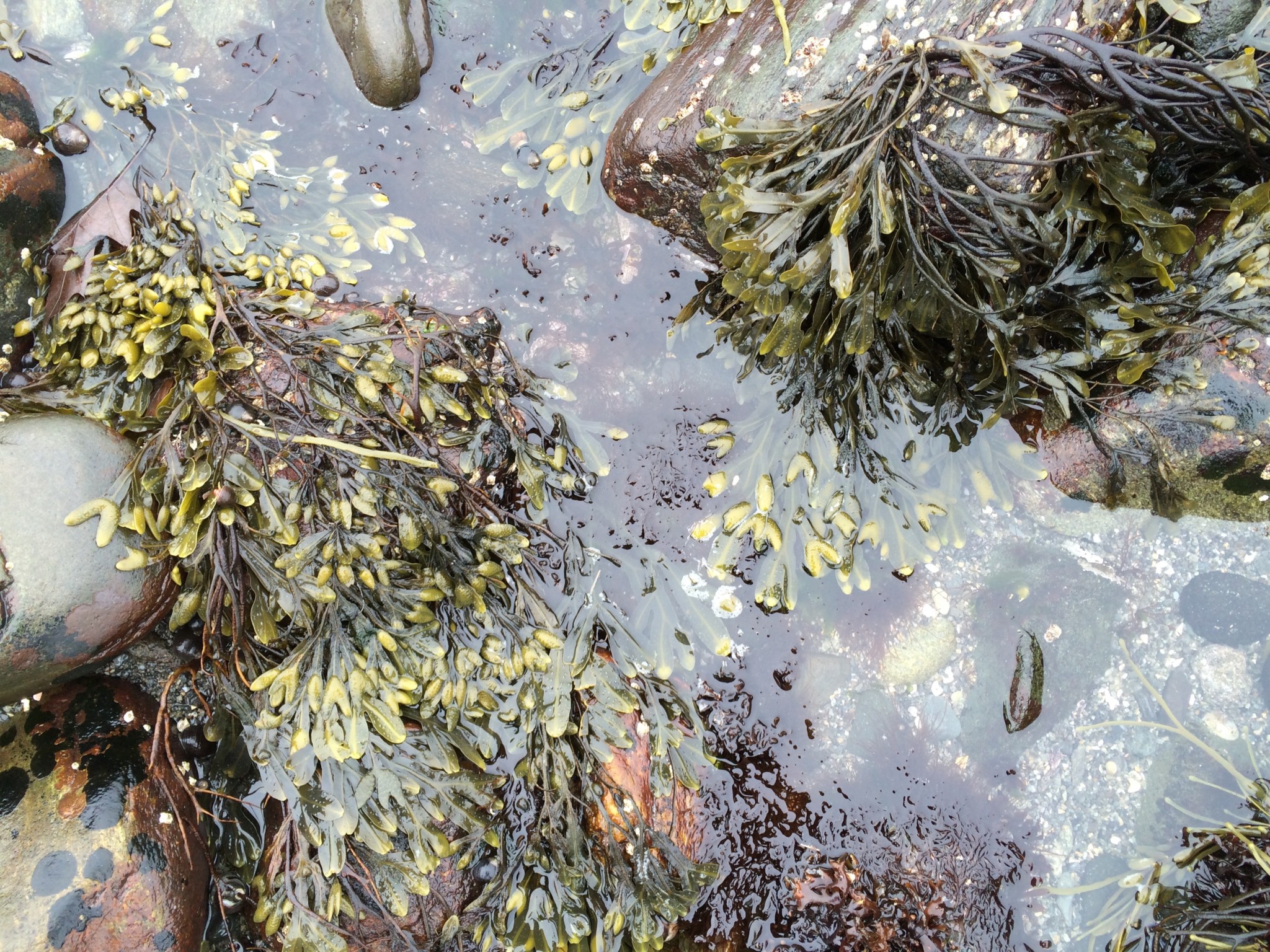While China reigns as top producer of cultured seaweeds in the $10.3 billion global industry, an edible seaweed fishery continues to expand and diversify New England’s coastal economies — particularly where other fisheries have declined or disappeared.
In 2016, Maine’s Department of Marine Resources counted a statewide harvest of about 14 million pounds, valued at $468,105. Despite a much larger wild-harvest commercial industry, the long-term outlook indicates a shift toward seaweed aquaculture. With a winter growing season from fall to spring — opposite busy lobstering and East Coast tourist seasons — cultured seaweeds are filling a niche. Currently, commercially important northeast species include: sugar kelp (Saccharina latissima) with smaller quantities of winged kelp (Alaria esculenta) and horsetail kelp (Laminaria digitata).
“Today, about 17 farmers from New York to Maine operate under licenses from their own state,” said Charles Yarish, a biologist at the University of Connecticut. “But back in 2009, we didn’t have any.” Yarish, considered to be the grandfather of the U.S. industry, says there is room for growth, and he has made efforts “to stimulate the culinary industry by making a processing machine (which cuts 550 kilos of kelp/hour) available to New England farmers, with support from a USDA/NIFA grant.”
This innovation facilitates the production of products like “kelp spaghetti noodles,” which can flash-frozen and shipped. Another benefit, adds Yarish, is that “seaweed production can decrease the PH and remove carbon from the ocean.”
So far, Maine has been a leader in the development of U.S. seaweed aquaculture. Springtide Seaweed, in Frenchmen Bay, Maine, grew 50,000 pounds of seaweed in 2015 and expects to triple their harvest this year.







